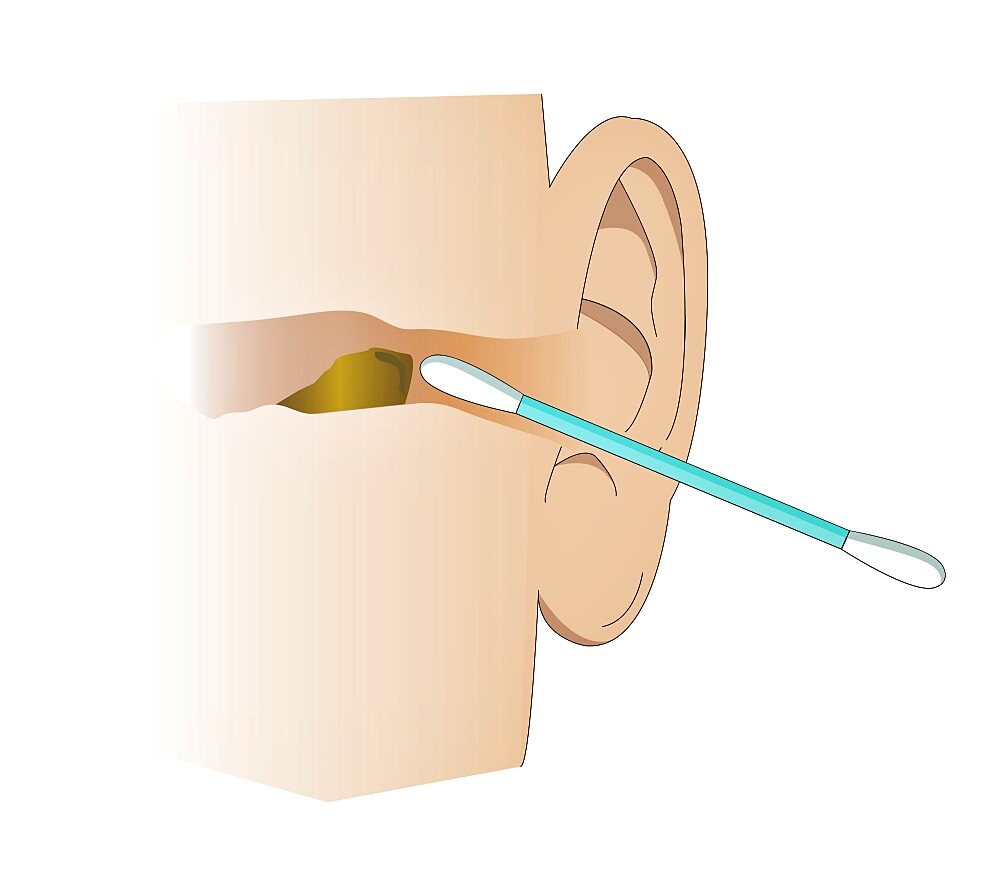There are various methods for removing earwax – but not all of them are really suitable. Here you can learn how to clean your ears properly.
Earwax Removal: Is this really necessary?
Earwax (cerumen) is probably rather unpleasant for most people – no wonder that for most people it is part of their daily personal hygiene to remove it. But do you always have to remove earwax? After all, it actually serves important purposes in the ear: the substance, which consists of cholesterol, cholesterol esters and fats, ironically cleans the ear and keeps the auditory canal smooth at the same time.
The secretion is slowly pushed through the ear by movements of the lower jaw (e.g. when chewing), taking dead skin cells, dirt particles and foreign bodies with it. In order not only to push the cerumen back into the ear, the earwax should only be removed when it becomes visible at the end of the ear canal.
Cleaning ears: How to do it right
When removing earwax, the most important thing is not to impair the self-cleaning function of the ear. The basic rule is: Under no circumstances should you try to remove earwax while it is still in the ear canal. Here come the do’s and don’ts of cleaning the ears:
Do!
Wet wipes: A soft cosmetic wipe is the best way to clean the ear. If necessary, this can also be moistened. This is also the only method with which you can gently clean sensitive baby ears!
Ear drops: Ear drops are available without prescription at the pharmacy. They soften the otherwise rather sticky cerumen, making it easier to remove.
Home remedies: Earwax can be gently removed using natural products. For example, high-quality olive or almond oil can be used as a substitute for ear drops to make the earwax more fluid.
Don’t!
Q-tips: With the classic cotton swab, the earwax is only pressed deeper into the ear canal.
Pointy objects: Especially when you have the feeling that your ear is already really clogged up with too much earwax, some people may toy with the idea of poking around in the ear with a pointed object. Please do not do this – the ear canal is extremely sensitive. In the worst case, the eardrum may be damaged or other damage may occur.
What to do in case of a graft?
In some people, excessive earwax production sometimes results in a plug. However, frequent wearing of earplugs or in-ear headphones can also promote a plug. The following symptoms can occur:
- Tinnitus
- Dizziness
- Feeling of pressure
- Itching
With a plug, the earwax is usually compressed into a mass and is firmly attached. In this case, the ENT physician should be consulted to remove the earwax. Typical medical methods for removal are rinsing the ear with water, suction or pulling out the plug with a so-called curette.

